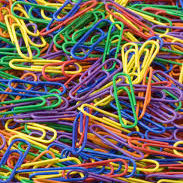[…] This work reports a bio-integrated gustatory interface, “e-Taste,” to address the underrepresented chemical dimension in current VR/AR technologies. This system facilitates remote perception and replication of taste sensations through the coupling of physically separated sensors and actuators with wireless communication modules. By using chemicals representing five basic tastes
[…]
Gustation, an essential component of the human perceptual system, plays a key role in the overall sensory experience and flavor perception. However, the integration of gustation is currently limited or missing in most AR/VR experiences. […]
The actuator uses an EM minipump to deliver concentration-controlled tastant solutions into the oral cavity. Figure 2AOpens in image viewer shows schematic illustration of the EM actuator consisting of a microfluidic channel and a minipump that includes a polydimethylsiloxane (PDMS) liquid chamber, NdFeB permanent magnets, and a coil placed perpendicular to the magnet (32). The design details and fabrication process of the EM actuator are in figs. S2 and S3. The outlet of the liquid chamber connects to the refillable microfluidic channel embedded with tastant-infused gels (fig. S4). The equivalent circuit of the system appears on the right. A bipolar junction transistor (BJT) serves as an “on/off” switch through a pulse width modulation (PWM) base current received from an ESP32 chip microcontroller. The actuation system uses an NPN-type transistor (2N2222), within which electrons serve as the majority charge carriers.
[…]
Liquid flows through the channel during the “on” state and stops temporarily during the “off” state, allowing interaction with the hydrogels with tastants. Adjusting the duty cycle controls the time that the liquid takes to traverse the microfluidic channel, thereby regulating the concentrations of taste chemicals in the resulting solution. A larger interval time (t) between pulses corresponds to a longer period of the liquid contacting the gels, increasing the resulting concentration of tastants in the delivered solutions
[…]
the variations in concentrations of five taste-related chemicals (H+, Mg2+, Na+, glucose, and glutamate) in the resulting solutions
[…]
Field testing involves healthy, consenting volunteers instrumented with devices to examine the human perception dimension of the e-Taste system within envisioned application scenarios in the real world. In the first case, assisted by the e-Taste system, it becomes feasible for individuals to share the taste experience of food remotely (Fig. 5AOpens in image viewer). Figure 5BOpens in image viewer illustrates an example of transmitting the taste of beverage: When a person immerses the sensor patch in a cup of lemonade near the Golden Gate Bridge (San Francisco, CA, USA), the system uploads the captured concentration data to the IoT platform. The actuator located at the campus of The Ohio State University (Columbus, OH, United States) subsequently downloads the data, guiding to replicate a liquid with the same taste profile. For the remote control and instruction, the entire duration includes the latency (0.3 and 1.4 s for the short- and long-range process, respectively; fig. S26), the sensor response time (~10 s), and an optional signal stabilization time after the response reaches the plateau.
[…]
The result confirms the high accuracy of the system in replicating taste sensations, effectively mimicking the sourness levels encountered in real-world scenarios.[…] demonstrates an accuracy rate of 70%, indicating that testers can distinguish different sour intensities in the liquids generated by the system. Increasing the training time and providing customized concentration categorization based on individual differences could potentially enhance the accuracy for future applications.
[…]
During the mixed taste recognition test, subjects interact with a multichannel e-Taste system in a “digital cup” geometry (movie S4). The experiment uses five food options: lemonade, cake, fried egg, fish soup, and coffee.
[…]
the recognition outcomes when users taste replicated solutions (sample size: 6, accuracy: 86.7%)
[…]

Robin Edgar
Organisational Structures | Technology and Science | Military, IT and Lifestyle consultancy | Social, Broadcast & Cross Media | Flying aircraft

